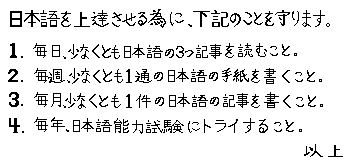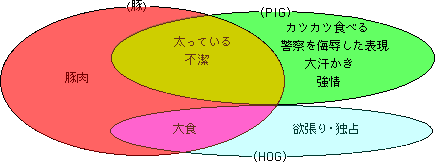|
As a Japanese Learner: Second Language Learning Goals for 1993 |

|
Illustration 1. A sample learner contract for a student of Japanese.
- Abstract -This paper describes four strategies which impact language learning. The value of learning schedules is first described. Next, the use of semantic networks and word maps is highlighted. After this, the value of self-talk and imagery is exemplified. Finally, the need for teachers to help students become more aware of their preferred learning strategies is underscored.Keywords: learning strategies, language learning, learner development |
Metacognitive Strategies
Cognitive Strategies
Social/Affective Strategies
Planning
|
As a Japanese Learner: Second Language Learning Goals for 1993 |

|
Organizing

Self-Talk
Imagery
Summary
| Chronological Index | Subject Index | Title Index |